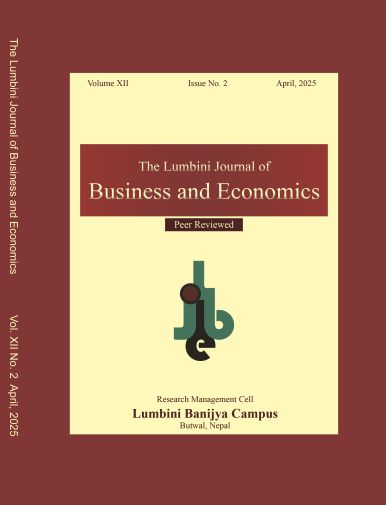Public Perception Towards Service Delivery System of Government Organization: A Study of Birendranagar Municipality
DOI:
https://doi.org/10.3126/ljbe.v12i2.77419Keywords:
Service delivery, government organization, citizen charter, employee responsiveness, grievance redressal mechanismsAbstract
Purpose: This study explores how residents of Birendranagar municipality, Nepal, perceive government service delivery, focusing on Citizen Charter, responsiveness, grievance redressal, and service quality. The purpose is to assess public perceptions of these aspects and understand their impact on overall satisfaction with government services.
Methods: A descriptive research design was employed, involving a survey of 152 clients from government organizations in Birendranagar. Data were collected using a self-designed questionnaire with closed-ended questions on a five-point Likert scale. The analysis utilized correlation analysis, and multiple regression analysis.
Results: This study explores the factors influencing public perception of government services in Birendranagar Municipality. The findings reveal that the Citizen Charter significantly enhances public perception, while Employee Responsiveness, Grievance Redressal, and Service Quality show weak or non-significant correlations. The Citizen Charter is the key factor influencing public satisfaction.
Conclusion: Enhancing the citizen charter and grievance redressal mechanisms improves public perception. Government organizations should focus on increasing transparency, accessibility, and efficiency in service delivery. By addressing these areas, policymakers can build greater trust and satisfaction among residents, leading to more effective and citizen-centric governance.




